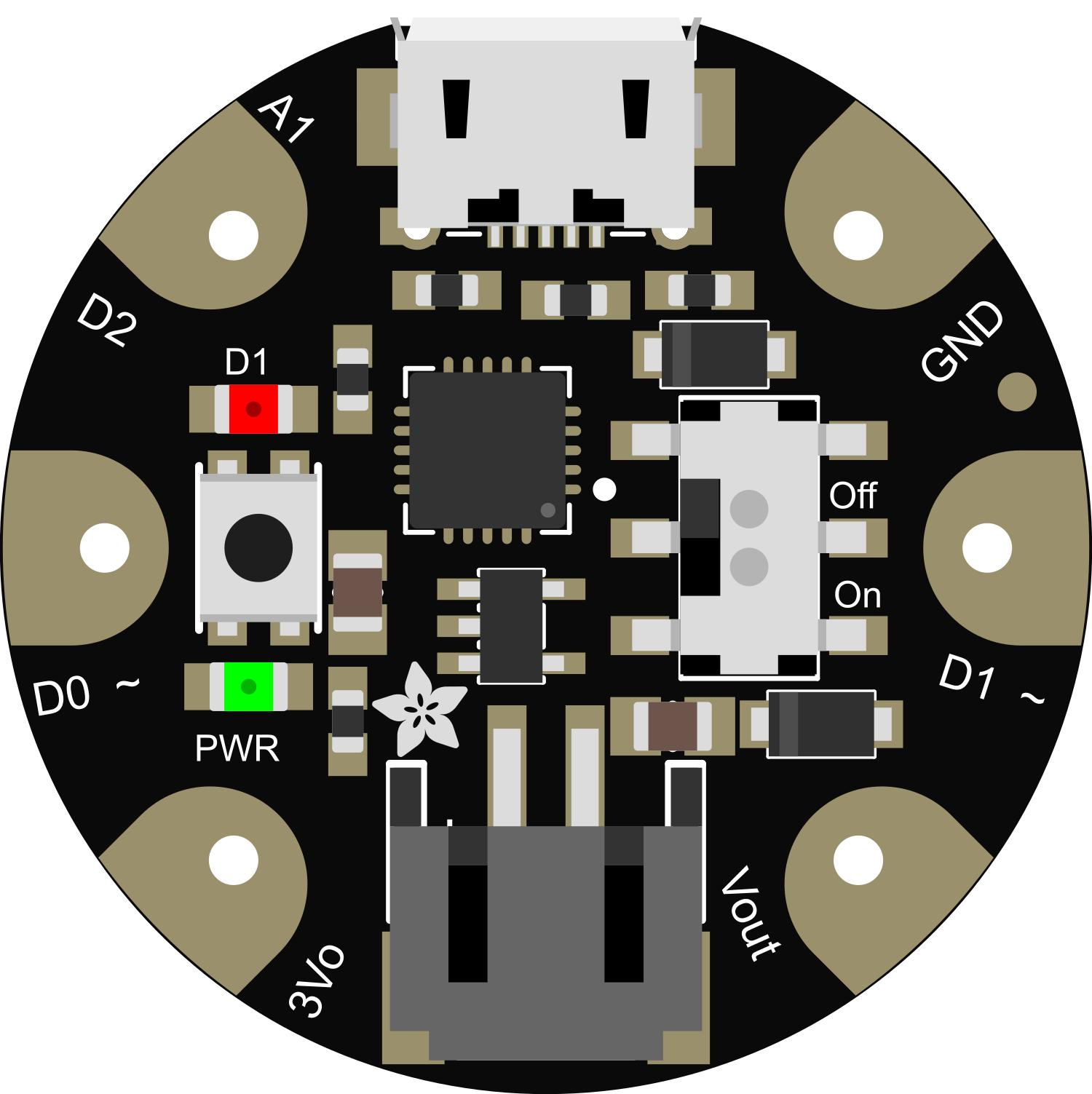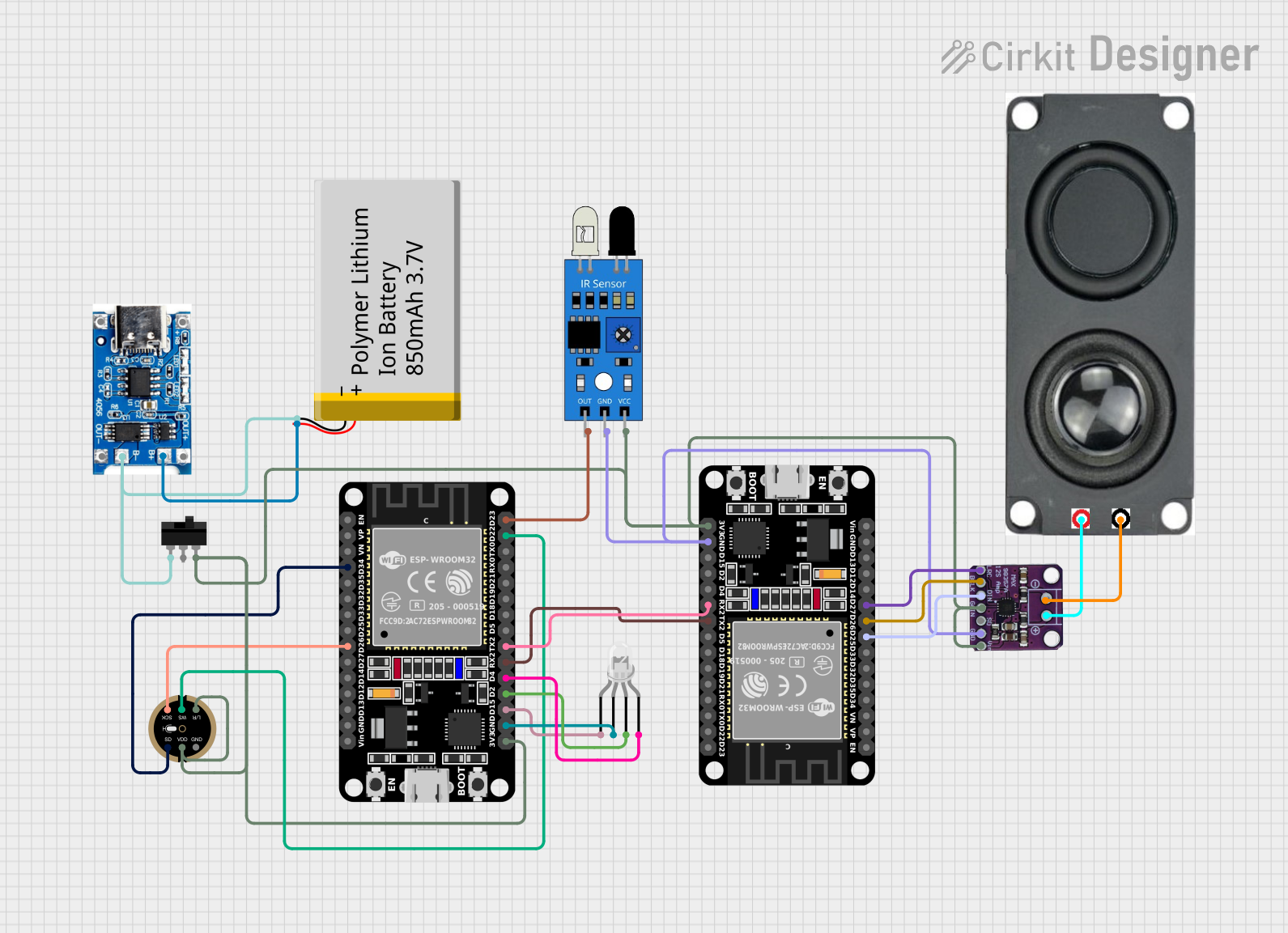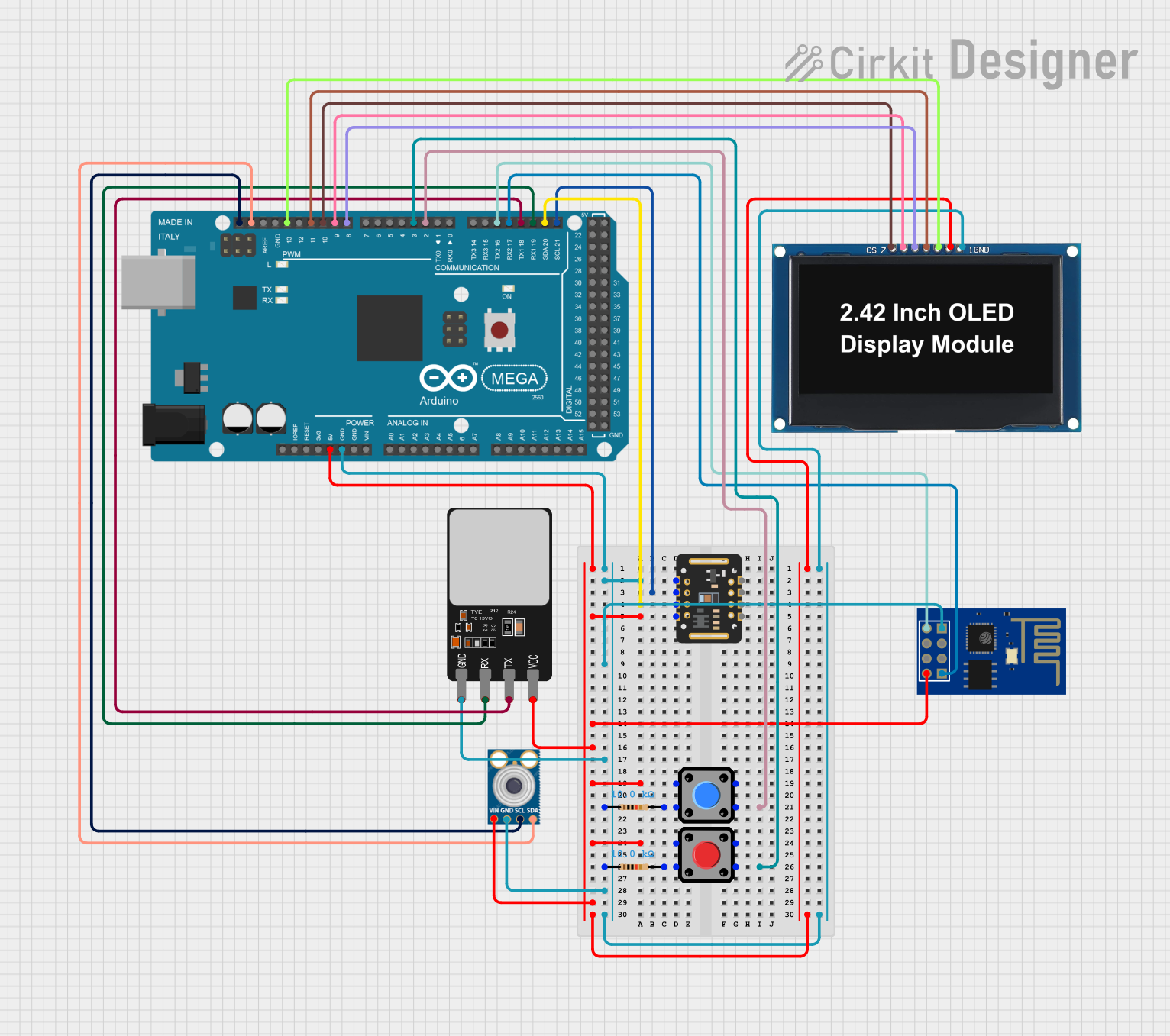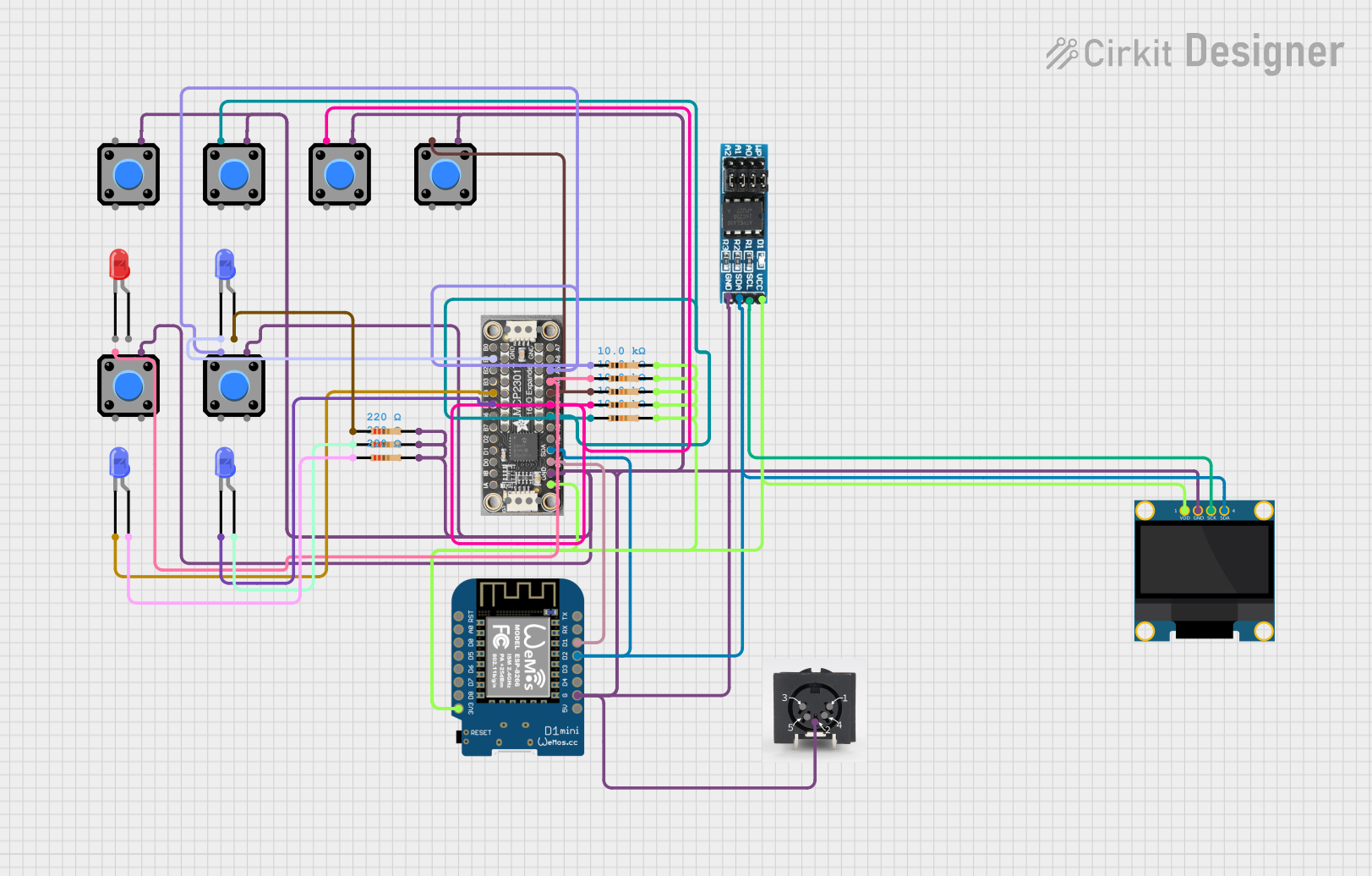
How to Use GEMMA v2: Examples, Pinouts, and Specs

 Design with GEMMA v2 in Cirkit Designer
Design with GEMMA v2 in Cirkit DesignerIntroduction
The GEMMA v2 is a tiny microcontroller board designed specifically for wearable electronics projects. It is built around the ATtiny85 microcontroller, which is a versatile and low-power chip ideal for small-scale projects. The GEMMA v2 is perfect for adding interactive elements to clothing, accessories, and other fabric-based projects due to its small size and ease of use.
Explore Projects Built with GEMMA v2

 Open Project in Cirkit Designer
Open Project in Cirkit Designer
 Open Project in Cirkit Designer
Open Project in Cirkit Designer
 Open Project in Cirkit Designer
Open Project in Cirkit Designer
 Open Project in Cirkit Designer
Open Project in Cirkit DesignerExplore Projects Built with GEMMA v2

 Open Project in Cirkit Designer
Open Project in Cirkit Designer
 Open Project in Cirkit Designer
Open Project in Cirkit Designer
 Open Project in Cirkit Designer
Open Project in Cirkit Designer
 Open Project in Cirkit Designer
Open Project in Cirkit DesignerCommon Applications and Use Cases
- Wearable technology (e.g., smart clothing, fitness trackers)
- Interactive costumes
- Soft robotics
- Educational projects and DIY crafts
- Prototyping IoT devices
Technical Specifications
Key Technical Details
- Microcontroller: ATtiny85
- Operating Voltage: 3.3V
- Input Voltage: 4-16V (via battery port)
- Digital I/O Pins: 3 (of which 2 are PWM capable)
- Analog Input Pins: 1 (shared with digital I/O)
- Flash Memory: 8 KB (ATtiny85) of which 2.75 KB used by bootloader
- SRAM: 512 bytes
- EEPROM: 512 bytes
- Clock Speed: 8 MHz
- Diameter: 27mm
- Height: 7mm
- Weight: 1.87 grams
Pin Configuration and Descriptions
| Pin Number | Name | Description |
|---|---|---|
| 1 | Vout | 3.3V output from the onboard regulator |
| 2 | A1/D2 | Analog input 1 or Digital I/O pin 2 |
| 3 | A2/D0 | Analog input 2 or Digital I/O pin 0, also PWM capable |
| 4 | A3/D1 | Analog input 3 or Digital I/O pin 1, also PWM capable |
| 5 | GND | Ground |
| 6 | BAT | Battery input for an external power source |
| 7 | 3Vo | 3.3V output, can be used to power external sensors or components |
| 8 | USB | Micro USB connection for programming and power |
Usage Instructions
How to Use the GEMMA v2 in a Circuit
- Powering the GEMMA v2: Connect a battery to the BAT pin or power the GEMMA v2 through the USB port.
- Programming: Use the micro USB port to connect the GEMMA v2 to your computer. You will need to install the Adafruit AVR boards package in the Arduino IDE to program the ATtiny85.
- Connecting Components: Attach sensors, LEDs, or other components to the I/O pins. Ensure that the components are compatible with the 3.3V logic level.
- Grounding: Connect the GND pin to the ground of your circuit to complete the circuit.
Important Considerations and Best Practices
- Always check the power requirements of external components to prevent damage.
- When sewing with conductive thread, ensure there are no short circuits.
- Use a multimeter to verify connections and voltages.
- Avoid placing the GEMMA v2 on conductive surfaces to prevent shorts.
Example Code for Arduino UNO
// Blink example for GEMMA v2
void setup() {
// Initialize digital pin D1 as an output.
pinMode(1, OUTPUT);
}
void loop() {
digitalWrite(1, HIGH); // Turn on the LED
delay(1000); // Wait for a second
digitalWrite(1, LOW); // Turn off the LED
delay(1000); // Wait for a second
}
Troubleshooting and FAQs
Common Issues
- GEMMA v2 not recognized by computer: Ensure the micro USB cable is data-capable and the GEMMA v2 drivers are installed.
- LEDs or sensors not working: Verify that the components are correctly connected and compatible with 3.3V logic.
- Program not running: Check that the correct board and port are selected in the Arduino IDE.
Solutions and Tips for Troubleshooting
- If the GEMMA v2 is not detected, try a different USB cable or port.
- Use a multimeter to check for continuity and correct voltages.
- Ensure that the battery used is within the specified voltage range.
FAQs
Q: Can I power the GEMMA v2 with a 5V supply? A: No, the recommended input voltage is 4-16V via the battery port. The onboard regulator will bring it down to 3.3V.
Q: How do I sew the GEMMA v2 onto fabric? A: Use conductive thread to sew through the large pads around the edge of the board. Make sure to knot and seal the ends to prevent fraying.
Q: Is the GEMMA v2 washable? A: The GEMMA v2 is not waterproof. Remove it from your project before washing.
For further assistance, consult the Adafruit forums or the extensive online community resources dedicated to GEMMA and wearable electronics.